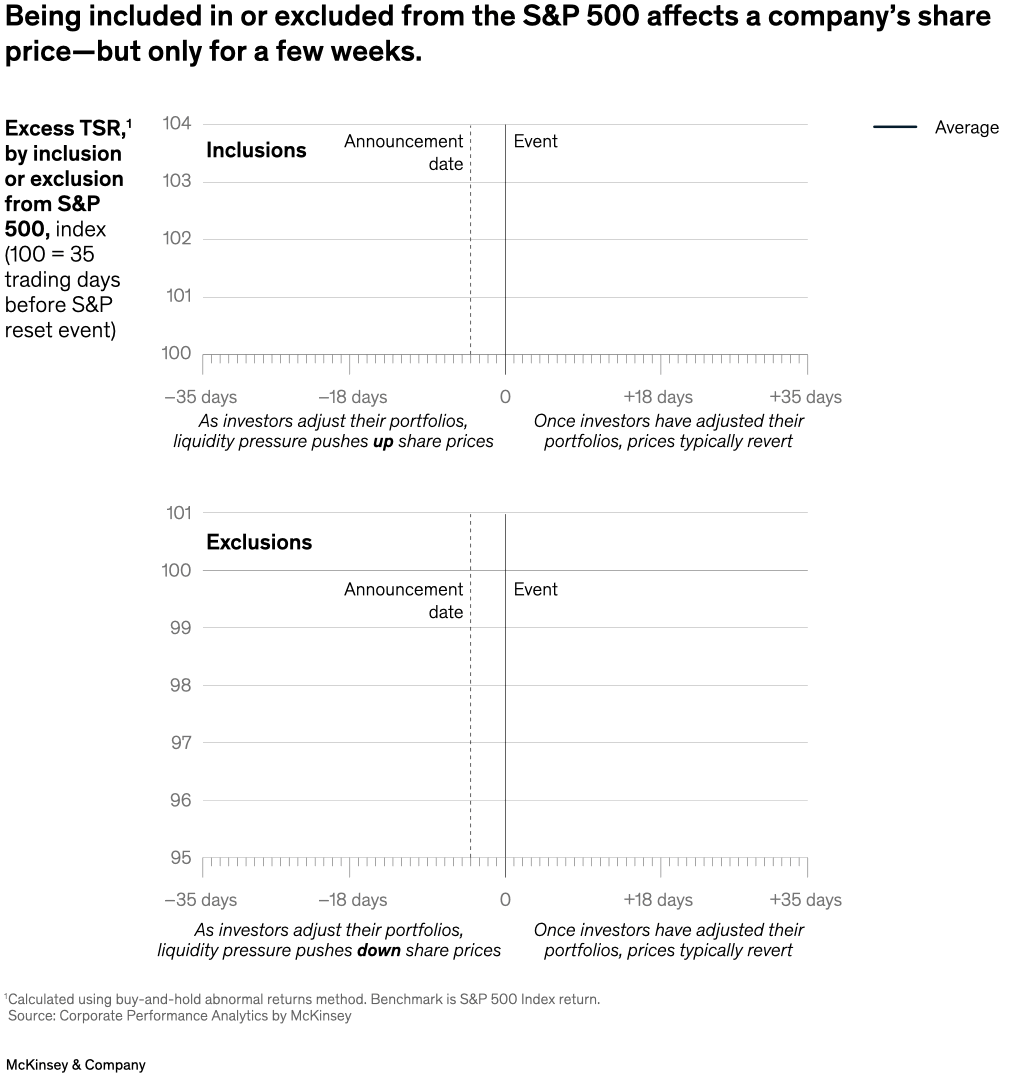Inclusion in or exclusion from a major stock index can affect a company’s share price, but the effects are temporary. Partner Tim Koller and coauthors analyzed hundreds of companies that were added to or removed from the S&P 500 over the history of the index and found that a company’s stock price returns to its intrinsic value within two months of the inclusion or removal. Shareholder returns drive index inclusion or exclusion, not the other way around, they say.

Image description:
A pair of line graphs show how an announcement of a stock’s exclusion or inclusion in the S&P 500 affects the excess TSR of individual stocks. Each graph uses an index set 35 trading days before and after the S&P reset event. The average and median stocks gain in the case of S&P 500 inclusion and lose in the case of S&P 500 exclusion. But for both inclusion and exclusion, they return close to their previous values within 35 trading days after the event. Source: Corporate Performance Analytics by McKinsey.
End of image description.
To read the article, see “The myth of an enduring index premium,” May 31, 2024.